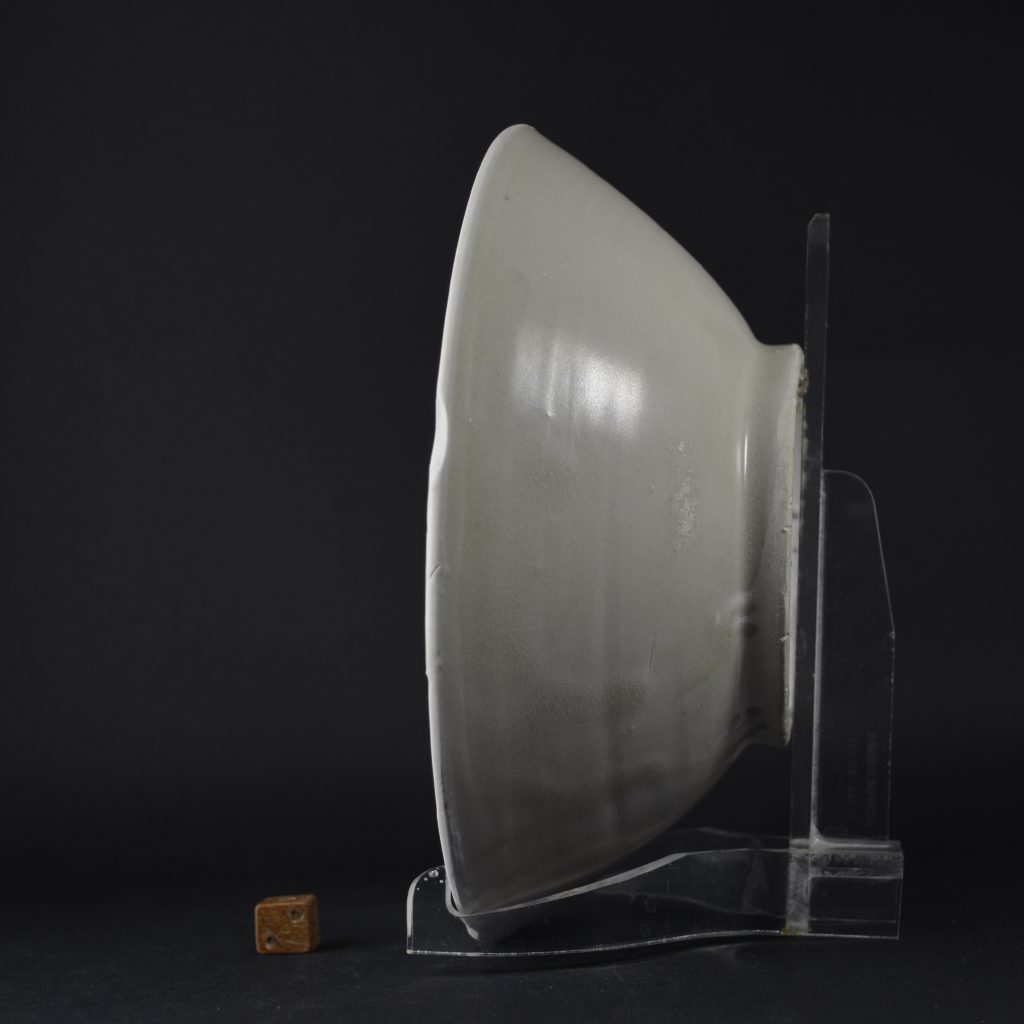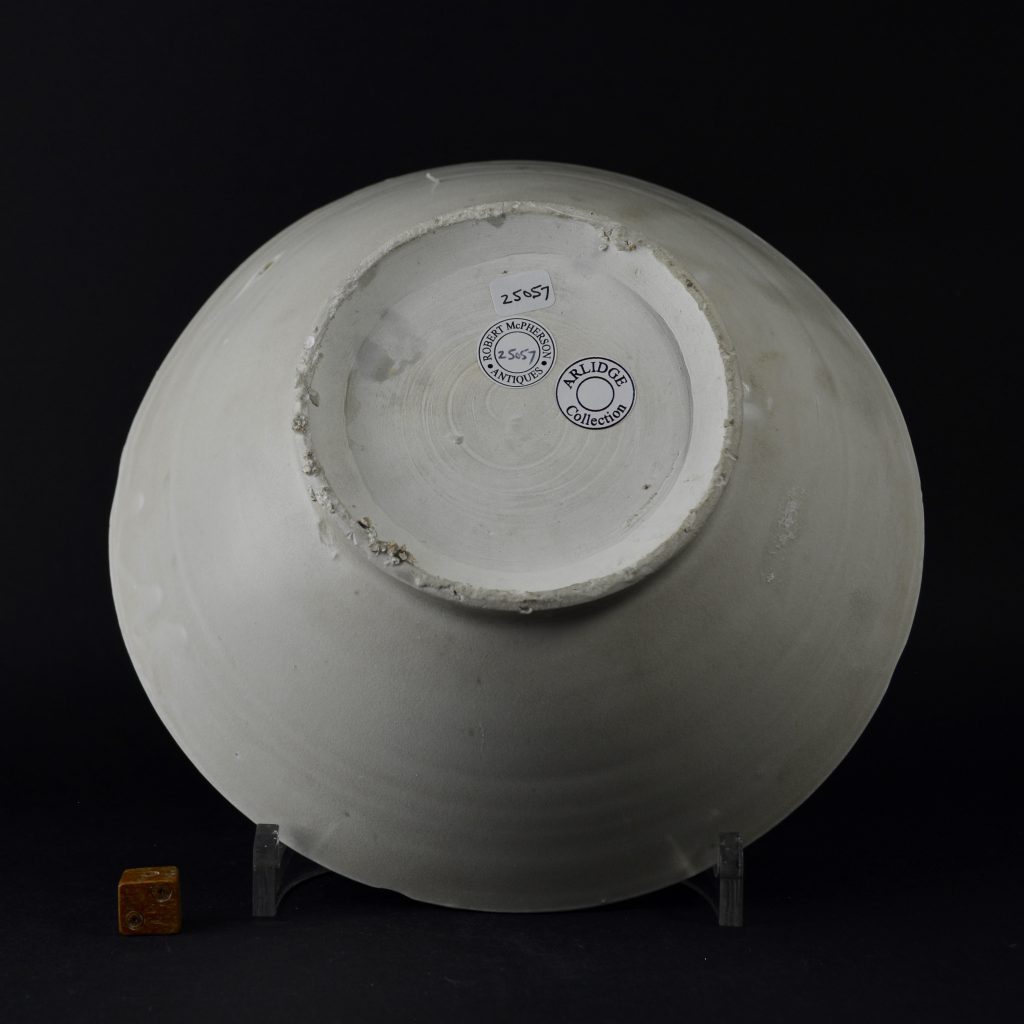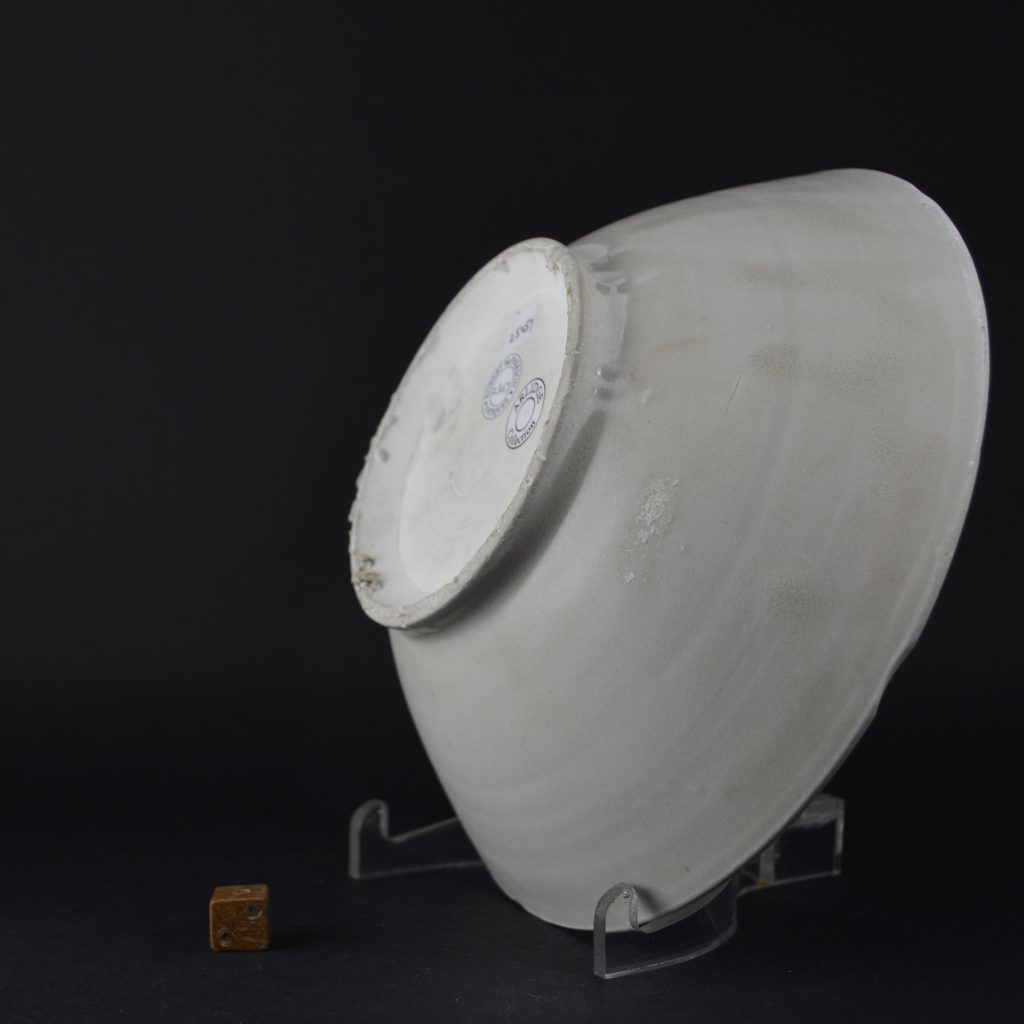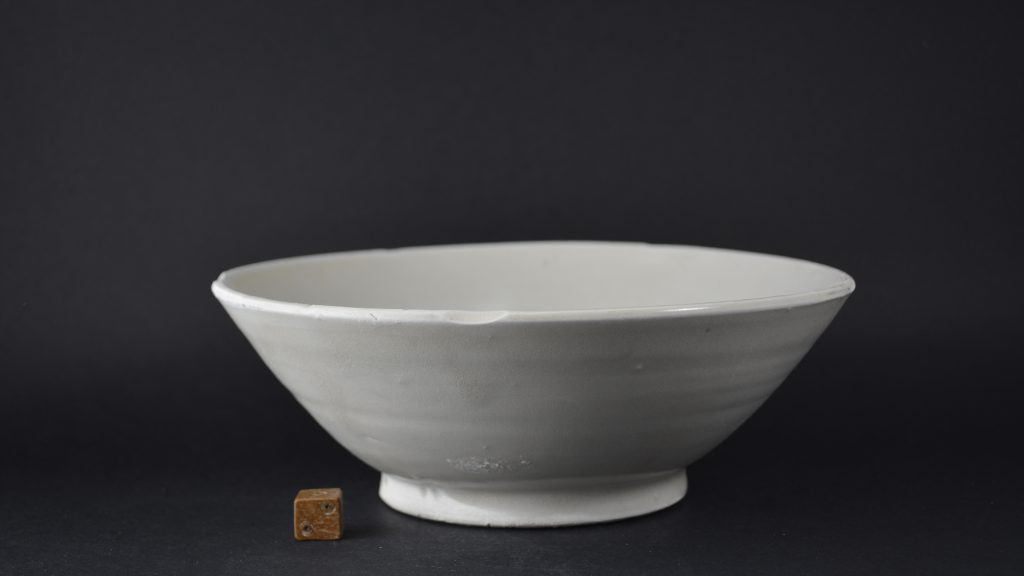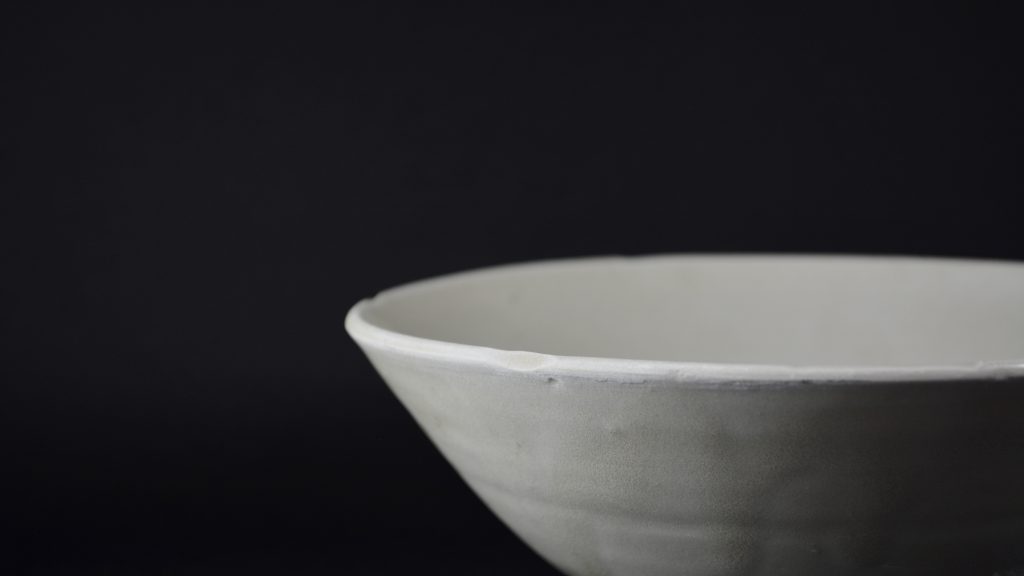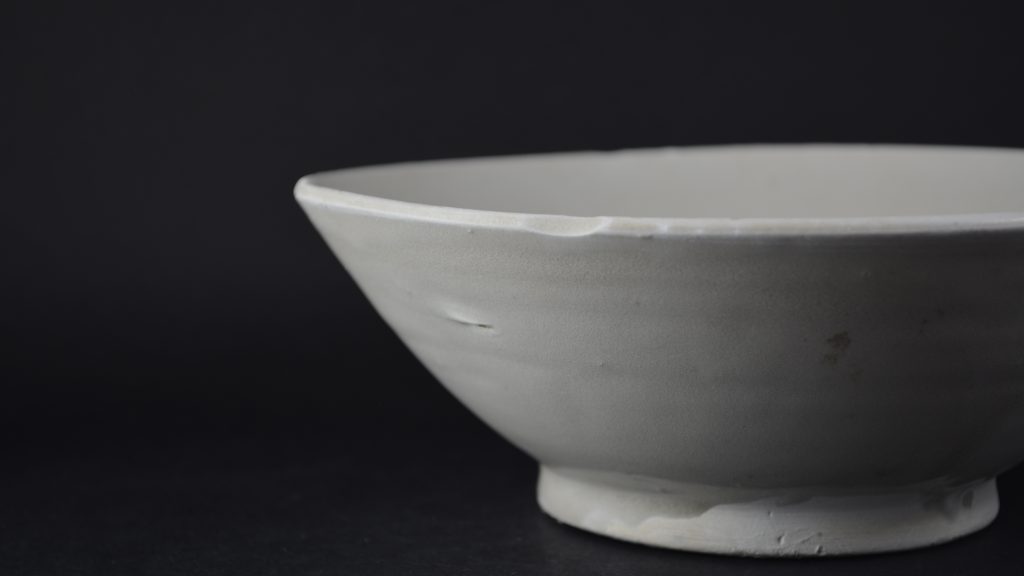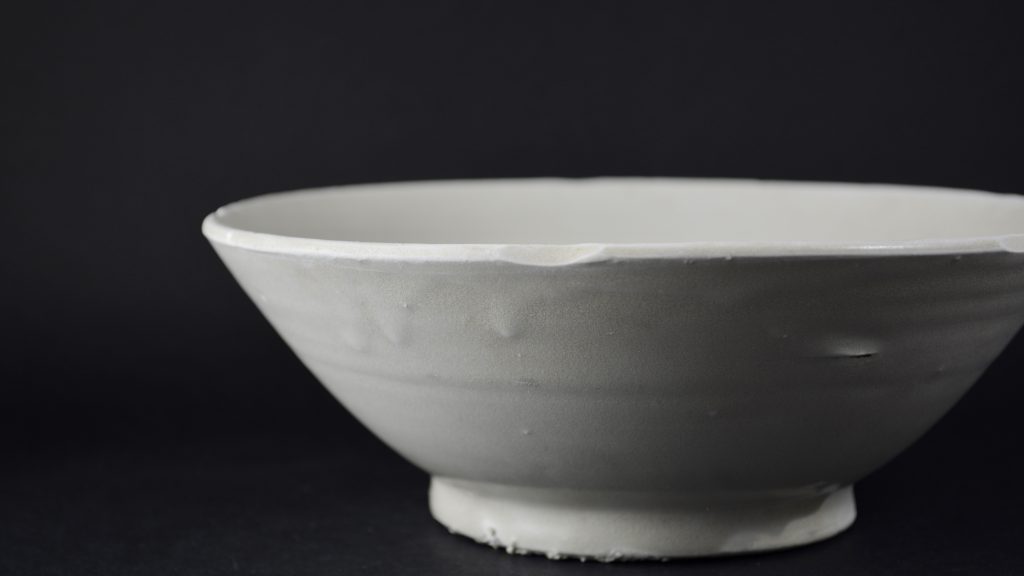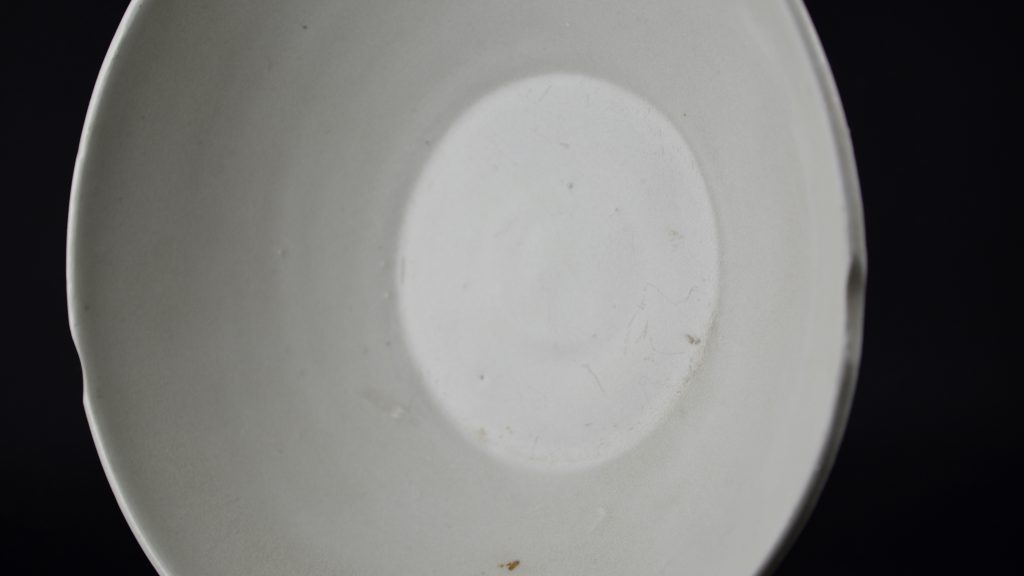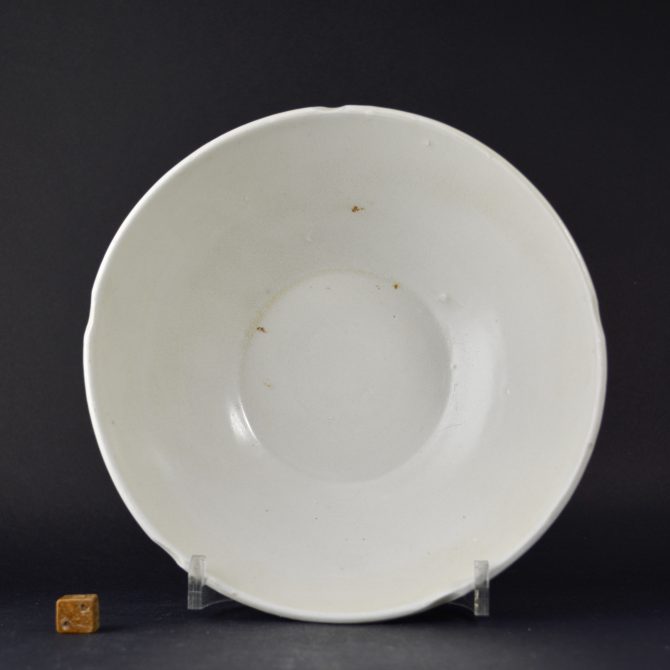
A Northern Song White Ware Bowl
A Northern Song white ware porcelain bowl, 10th or 11th century, perhaps from a kiln in Fujian province. This light, rather thinly potted deep bowl with flared sides has five notches to the rim. This Song bowl appears to have been fired on grit as the footrim has quite a large amount of grit adhering to it.
SALE PENDING
- Condition
- In excellent condition, some very minor light scratches to the well. A few rust spots. No damage.
- Size
- Diameter : 18.9cm (7 1/2 inches) Height : 6.8 cm (3 1/2 inches)
- Provenance
- The Peter Alidge Collection of Song Ceramics.
- Stock number
- 25057
Information
Early Chinese Ceramics - White Ware :
Since the Tang dynasty (618-906) writers have paid homage to the beauty of white wares leaving tangible evidence of their value. However, the class and refinement displayed in wares of complete whiteness had been sought after hundreds of years before the Tang dynasty and would be cultivated for hundreds of years after its demise. This infatuation generated a variety of white wares which vary in degree of whiteness, refinement of materials, and decoration as a large number of kilns produced white wares even if it was not their specialty. Importantly white wares are not confined to one way of production or from one kiln or geographic area. Until the Southern Song dynasty white wares were considered a product of northern China, however, white wares were still manufactured in the south. Thus, within this commentary, white wares are loosely defined as a body (porcelain or stoneware), slip, glaze, or any combination therein, that creates a white or white-toned ware. Additionally, only a few of the most influential white wares produced during the Song dynasty (960-1279) are discussed as scholars are still debating over the many types of white wares. Future excavation and research hold many exciting discoveries for this discipline.
With white ware it is important to note that though porcelain and stoneware bodies can look different they are essentially the same materials and the borderline between the two can be hazy. Technically, porcelain has a greater refinement to its body and is fired at a higher temperature, however some high quality stonewares have fine white bodies. Interestingly the Chinese only use one word, ci, to describe both porcelain and stoneware bodies.
Pursuit of white wares in northern China had begun by the Shang dynasty (17th-11th century BC) where remains of a few white proto-porcelains exist. Though white in colour these wares were not practical for use as they were soft and porous; however, in a society that primitive they had to have immense aesthetic appeal. Eventually, during the Eastern-Zhou (770-221 BC), the proto-porcelains began to imitate contemporary bronze forms and copy their decorations such as ribbed banding and scroll motifs termed leiwei or ‘thunder pattern.’ Then during the Han dynasty (206 BC-AD 220) the forms became varied and more independent of bronze work alternatively drawing inspiration from lacquer.
